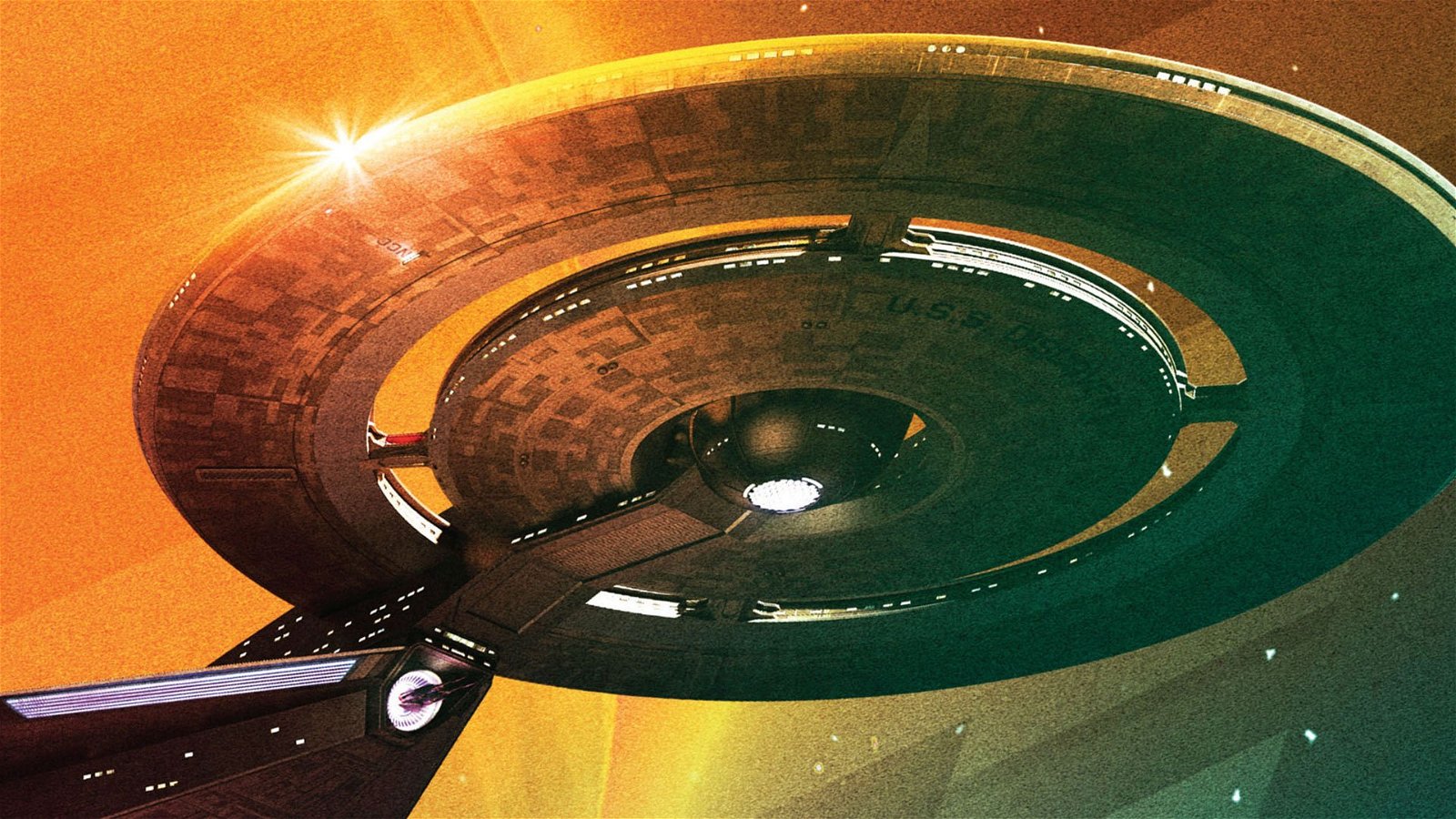Earlier this year, during a period in my life where I had a lot of downtime and required some distraction to fill the endless hours, I binged through all of Star Trek: The Next Generation and Star Trek: Deep Space Nine (the latter I did twice). That’s a lot of television to get through, and 14 (plus a victory lap seven) seasons of Trek combined with re-watching the J.J. Abrams films (I fly a lot) is enough to put anybody off the series. However, it was also excellent preparation for the latest series, Star Trek: Discovery, which aired this Sunday.
I am by no means a “Trekkie”, but I’m definitely a fan of the Star Trek Universe and feel I am in a somewhat unique position to judge the latest outing: little in the way of hardline fan loyalty, but a decent knowledge of the two best series and recent films. With that in mind, I’m very much digging what I’ve seen so far from Discovery, but following the end of the second episode and the potential trajectory of the story arc for this season, I can understand why die-hard Trekkies are a bit wary of Star Trek: Prison Break or Star Trek: WAR. Will Discovery be a bold new direction for Trek, or will it be a risk-free re-tread of the classic themes and structure? Spoilers to follow, obviously. It would be a rather boring and barebones article if I had to black out all the relevant information.
The Klingons
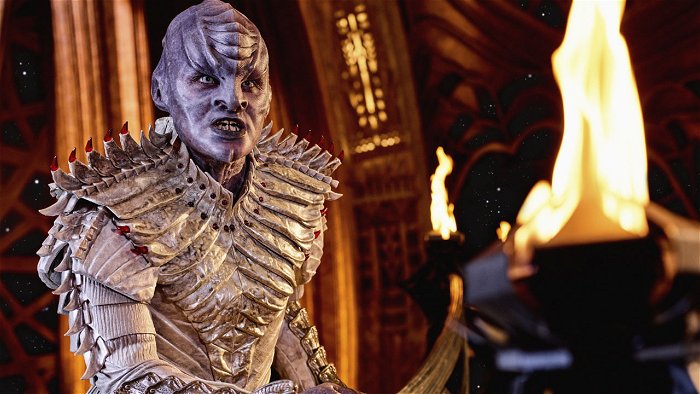
First things first, let’s talk about the “new” look for the “old” Klingons, a race that since the very beginnings of Star Trek were hyped up as the ultimate badass warriors but never really felt that way, coming across more like a PG-13 mashup of Vikings and Mongols who seemed to enjoy talking about battle and honour more than actually fighting. With a brand new aesthetic covering the Klingons themselves, their attire, their ships, and even a redesign of the universe’s most unwieldy and impractical melee weapon, the Batleth, the Klingons in Discovery are much more primitive and much more threatening (so far) than how they’ve been depicted in previous iterations. The bony, organic texture of their armour and ship interiors lit by torches lends them an extra-terrestrial appeal that never really came across in prior depictions.
I have never thought of the Klingons as “cool” (Cardassians all the way), but the very first appearance of a stoic and silent armour clad Klingon rocking a batleth on the outer hull of a space ship had me audibly gasping. These are not the goofballs singing songs and chugging blood wine that we’re used to. And although the idea of using coffins filled with deceased Klingons as armour plating for their ships makes very little sense in a universe that features phasers, photo torpedos, and deflector shields, the concept is perfect for a race where death in battle is the ultimate religious goal. It’s simple, silly, and perfect for a villainous race of war-obsessed tough guys without coming across as too cheesy. The Klingons in Discovery are perhaps not scary, but certainly the most intimidating and alien version of the species we’ve seen yet.
No Captain (so far)
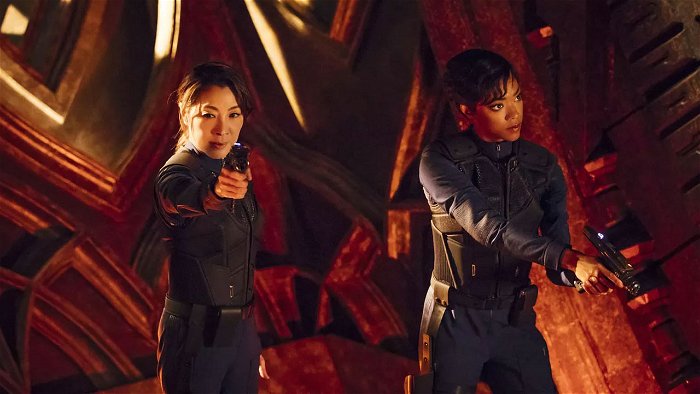
The Trek formula for a main cast has always included a Captain, First Mate, Science Officer, Doctor, and some form of Alien/Android/Hologram that spends the entire run learning how to be “human”. So far in Discovery we have…a dead Captain and a mutinous Number One currently en-route to prison. On the one hand, it’s still very early in the series to make any claims about regular cast members and crew structure, but on the other hand, this break from the formula might be exactly what a new Trek requires to be a success. How many versions of the Kirk/Spock/Bones dynamic do we need? Hell, at the moment our protagonist doesn’t even have a ship to serve on.
While some Trek fans are decrying this break from the norm, others, such as myself, are excited to see the other side of the Trek universe. The setting is perfect to explore the darker sides of future-humanity before the Federation became the Utopia that we’re familiar with. This is a link between what we’re familiar with in 2017 and the far-off future of TOS and TNG. Hell, they even kick things off by using both a Star Date and our current system of measuring years to emphasize this connection. I’m sure that Michael will eventually find herself in command of a star ship, perhaps due to a lack of decent officers following the initial confrontations with the Klingons, so I doubt fans of the classic formula will have to suffer much longer. It would be cool for the series to continue on this path though, and show us more of the early Federation than simply the bridge of a vessel.
Visuals Visuals Visuals
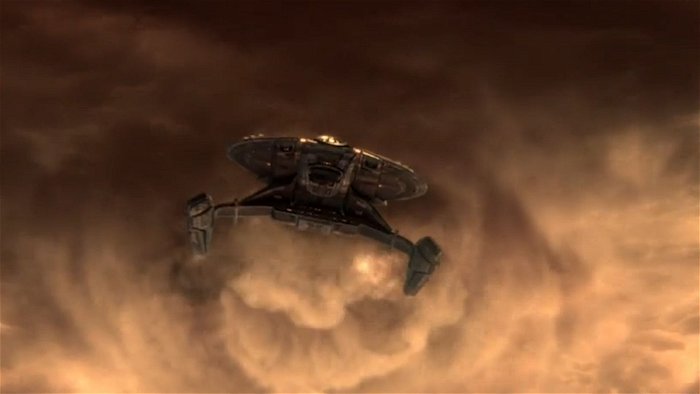
One complaint I’m seeing a lot in online discussions is that a lot of viewers are displeased by the clean and futuristic look of the bridge and various technologies present in Discovery. The showrunners have claimed that the series does take place in the “Prime” timeline, a few years before the TOS. Why then, does nothing resemble the cheap, blocky, and downright silly style of a low-budget television show from the 60s?
I mean, come on. It’s glaringly obvious that what looked cool and futuristic in the 60s does not look cool and futuristic 50 years later. If they replicated the plywood and blinking lights of the original Enterprise the show would look utterly ridiculous and no one, including the hardcore fans, would be able to take it seriously. Sure, holographic HUDS on spacesuits and touch screen displays come off as a bit anachronistic when viewed as taking place before the original show, but at least the theory behind the technologies and what’s actually plausible is covered.
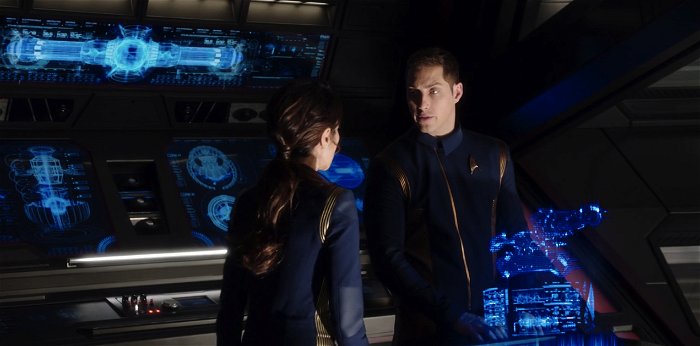
Phasers and transporters aren’t as advanced or capable as they’ve been demonstrated to be in the other series, there are no replicators, and the communicators and tri-corders look as close as they can to the 60’s versions without coming across as unbelievable fan-service in the context of the show’s setting. On top of this, special effects technology and a far bigger budget allow Discovery to show off concepts not possible 50 years ago. It adds a movie-level quality to the show that makes it both easier to digest and take seriously as a vision of space travel in the future. It’s still got an air of cheesiness that makes it feel like Trek, but for the first time basically ever, the Universe of Star Trek looks “cool”.
Where the show ends up going and whether or not it maintains this goal of treading new waters remains to be seen, after all, we’re only two episodes in. Pleasing diehard fans of ANY long-running franchise is a monumental and nearly impossible task, and whether they watch it because they truly enjoy it or they just want more material to rant about in online forums doesn’t matter—they’ll still watch it. Personally, I’m pretty excited to see where Discovery goes and if nothing else, at least it seems better than Voyager and Enterprise—so far.
Besides, in Canada we don’t have to pay CBS for their particular, lacklustre streaming service just to watch the show.
